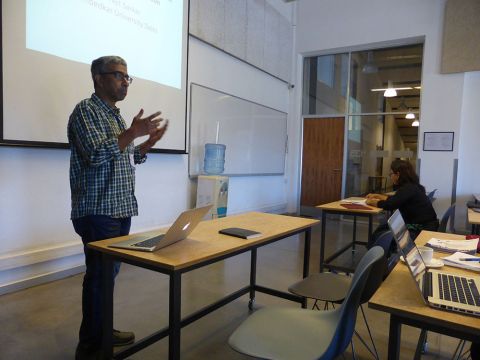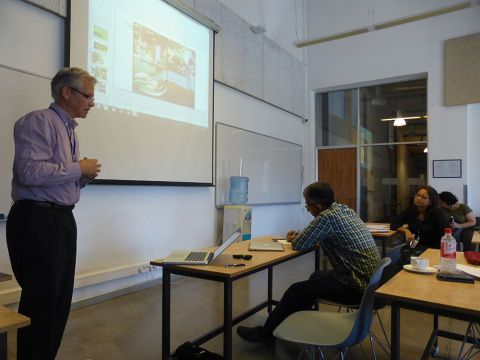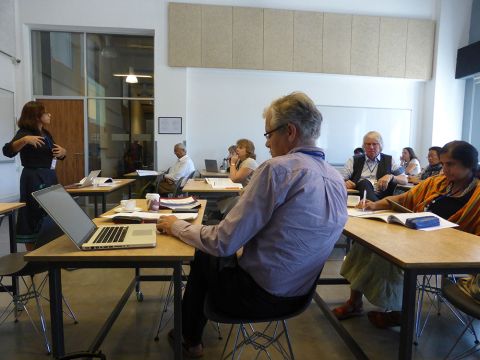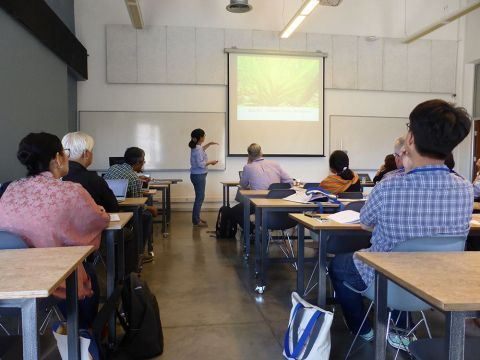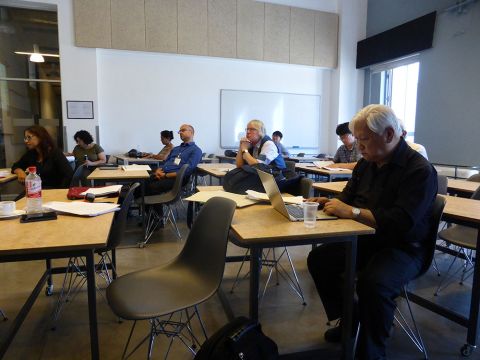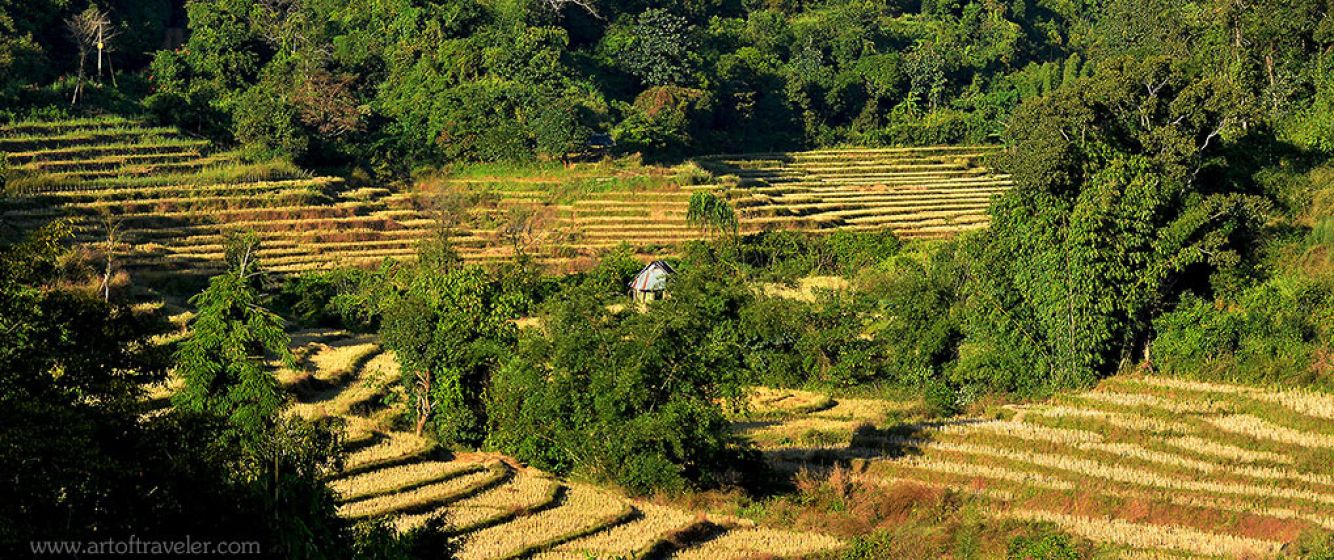
Rice-scapes across Borders: On the Asian Rice-scapes Panel at the 6th Asian Borderlands Networks Conference
The 6thconference of the Asian Borderlands Network was held at the American University of Central Asia in Bishkek, between August 13–15. The central theme, “Ruins, Revival(s) and Resources,” inspired the panel convenors to propose a broad array of topics covering the different corners of Asia.
The detailed program is still accessible online here. Our double panel, “Asian Rice-Scapes: Topographies, Tastes and Technologies,” has been shaped by the same combination of shared interests and chance encounters. Indeed, the HaB inter-regional meeting in Chiang Mai, in February 2017, was attended by five of the seven initial panelists. The effort to put in conversation scholars from Asia and Africa about rice reflects the spirit of the Humanities across Borders: Asia and Africa in the World concept. With food and health practices as one of the five themes explored through transdisciplinary research, and rice as a cross-border staple in contemporary cuisine, the panel has invested in a stimulating field of inquiry at the outset.
Setting the Stage: Thinking Rice across Asia and Beyond
To be sure, the title of the panel does not immediately suggest the inter-regional nature of the conversation. Even the abstract does not dwell on this aspect, but rather on the multiple forms of production, circulation, and uses involved:
This panel focuses on how rice cultivation creates what might be called rice-scapes: spaces that are defined by specific modalities of rice cultivation, distribution, and consumption.
Surely, it implies a vague notion of landscaping. The shapes of the physical sites of production, the habits developed over the course of centuries of culinary experiments and the repertoire of tools and instruments deployed in subsistence or cash-crop farming. Each element—topography, taste and technology—can be both material (technical) and immaterial (spiritual) in its realization, translation, or representation. In any case, Asia as a rice continent seems self-evident today. But thinking rice beyond Asia, especially in and with Africa—that is the core challenge of the panel in my view. In other words, there is a need to rebalance the perception that rice is only produced in Asia to be consumed in Africa (and other places). The reality is actually more complex and needs a long-term commitment from different research disciplines. Historians and archeologists have already contributed a great deal to our understanding of the emergence of rice on the two continents. Accordingly, rice cultivation can be traced back to 2,500–3,000 years, with the domestication of two different wild varieties, which would give the Asian rice (Oryza sativa) and the African rice (Oryza glaberrima). In both cases, the major river basins became the crucible of this technological revolution, which would lead to the diversification of cultivated varieties and the expansion of a vast knowledge base.
Remarkably, all the six presentations discuss the physical context of rice cultivation, though each focuses on particular local or regional practices. Surajit Sarkar's description of the circulation of rice varieties between India and Tibet 200 years ago illustrates the ‘migratory’ nature of this crop. However, there is actually no such thing as ‘rice’ since each village grows scores, if not hundreds, of varieties which are combined with other wild and domesticated crops, gardening, fishing, and hunting activities. A similar picture emerges from the presentation of the West African context. Our paper also focuses on the multitude of rice varieties grown around the Niger and Senegal rivers until the recent past. Today it is hardly imaginable that fifty or more local types of rice used to be harvested around Gao over a period of six months. Only the documentation recorded in writing and on tape enables us to capture even a fragment of the variegated ‘ricescape’ that prevailed only fifty years ago. Nowadays, at most three indigenous varieties are cultivated alongside three new (Asian) varieties adopted over the decades. Both the cultivation and consumption of traditional rice have become highly localized. The decline of the African rice seems inexorable, despite all the high qualities conceded to it: resistance to drought and parasites, nutritional value, irreplaceable role in traditional dishes and rituals. Then, why has it been losing out on the market and in the kitchen, especially in urban areas?
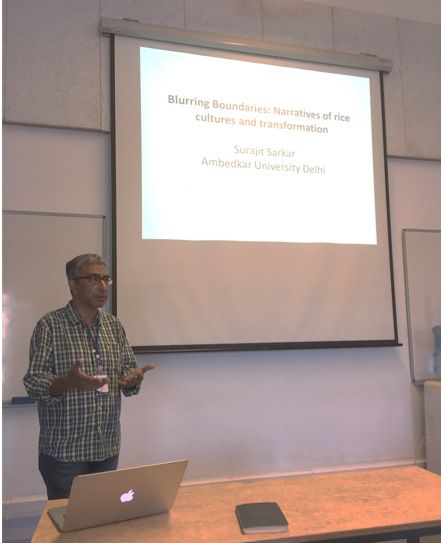
Surajit Sarkar
A Cross-view of the Asian-African ‘Ricescapes’
The panel has given the opportunity to put this question and others further in perspective. The demise of the African rice sounds dramatic at a time when the grain has become a mainstay of global cuisine, a universal staple. In Africa itself, until recently, many regions knew little of rice. Their main dishes were instead based on corn (maize), sorghum, millet, tubers, and vegetables. Today, rice-based dishes have spread, mostly from the western part, across the continent and, through the diaspora, to the rest of the world. The success of this versatile grain doesn't seem to carry the indigenous varieties, which are steadily squeezed out of the lucrative markets. As a result, they have become foreign to the taste buds of contemporary urban consumers who have grown up on rice imported from Asia. Even the modern ‘white’ rice produced in major agricultural ventures along the Niger and Senegal rivers only perpetuate the monoculture of imported varieties. In a notable case, huge investments once flowed into producing a new rice called Nerica; to put it bluntly, Asian rice with some features of the Oryza glaberrima (an offshoot of the still extant wild Oryza barthii) in order to better withstand the African climactic and parasitic conditions. So far, the results have fallen short of the expectations. Opponents of the agro-industrial scheme consider themselves vindicated and call for more investment in pursuing the path led by the peasantry over centuries, by maintaining the diversity of rice seeds adaptable to the different topographies, soils, and climates. The critics see in the Nerica the specter of a single variety controlled by a seed engineering corporation and marketed through a central distributor; that is, eventually, the denial of seed sovereignty and food security for peasants and their communities. Its success would have created a sort of big rice designed for the commodities markets, not to enhance the resiliency among African rice growers. However, the different local situations in India and Thailand also illustrate a global trend in dwindling diversity in rice. The threat of emerging monocultures is real in both Asia and Africa. Local cultivation techniques are coming under pressure for different reasons. In many cases, climate change and shrinking arable land make it difficult to continue ancestral practices. But the primary obstacle seems to be the structural disadvantage traditional cultivation practices have in relation to “modern” rice growing. The two highland communities in northern Thailand show how local priorities can diverge from the official perspective. Chayan Vaddhanaphuti retraces the latent conflict triggered by the way the Lua people manage their communal fields and forests, leaving large portions fallow over 7 to 10 years. In fact, both the collective ownership and the selective exploitation of land are at odds with the official policy of intensive export agriculture. At the least, local practices are blamed for undermining food production, therefore posing a threat to national security. Malee Sitthikriengkrai sees parallels in the Karen region in which collective exploitation and preservation of fields and woodlands have made the area attractive for official ecotourism promoters, but the interests diverge when it comes to cultivation practices, like the seasonal use of wild fires as ancestral landscaping technique.

Malee Sitthikriengkrai presents her paper at the panel
Similar patterns are reported in northern India in two papers. Both Dharitri Narzary's presentation on the Bodo in the border areas of India and Bhutan and Erik de Maaker's on the Garo bring to the fore the powerful ways in which rice growing has shaped communities, social relationships, spiritual practices, and identity politics. They also highlight a recurrent motif: rice is more than a crop or commodity, it is the currency and medium of ritual, sacrifice, and spiritual bonding in many communities. While the Bodo culture idealizes rice growing in its folklore, even producing in the Bhutanese across the border its antonyny, the potential predator to guard crops against, the Garo go to great lengths to create new criteria to define ‘Garoness’. The necessity for a person to have both parents be Garo to be one is a key move in reframing collective identity and limiting access to ancestral land.
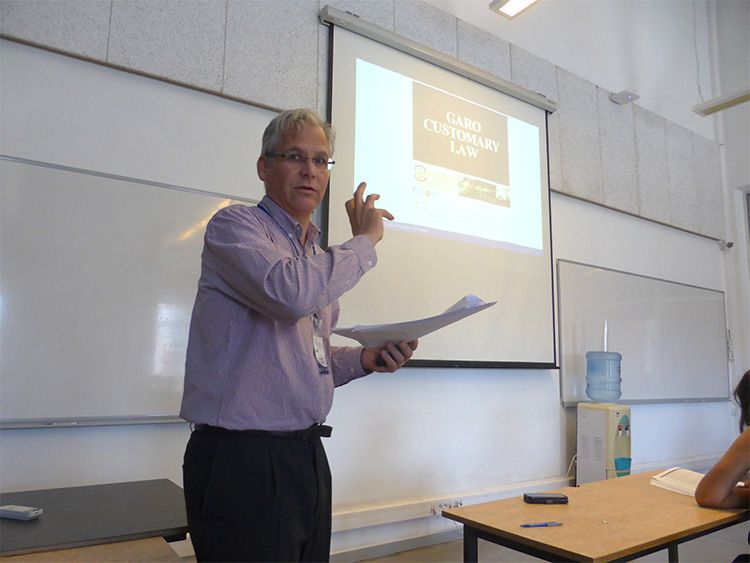
Erik de Maaker
Rice as Ultimate Border Subject?
The six papers have offered the opportunity to explore rice, not only as a dynamic agent in local and national economies, but also as a shaper of routes across landscapes, regions and continents. The papers on Asian ‘ricescapes’ invariably compare highland vs. lowland, dry vs. wet rice growing. There is a built-in hierarchy in this binary. Dry highland is ancestral, at times tribal, generally subsistence farming, while wet plain cultivation is more extensive and potentially cash oriented. In this sense, the expansion of the latter at the expense of the former signals, in the way of communicated vessels, the increasing marginalization of local rice growing. Curiously, at the global level, a similar picture seems to emerge when we consider the continuous demise of African rice in favor of Asian rice. But is this an accurate representation of the situation? The question is worth asking since both Asian and African rice have been traveling, discovering, and conquering new regions. Recent research shows not only that the parallel domestication of wild rice that generated the two regional types happened at about the same time; moreover, the Oryza sativa arrived in Africa and the Oryza glaberrima in America about 500 years ago. Thus, African rice had an interesting trajectory and a promising career in the Americas, while it prospered and spread from the major Niger and Senegal river basins to other rivers in Africa. Is this rice capable of a rebound under the current circumstances?
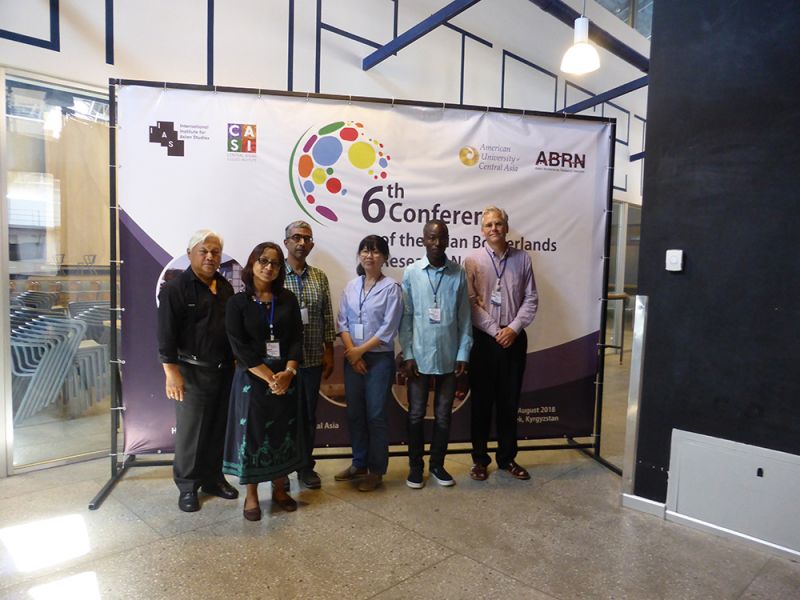
Farewell around a Bowl of Rice
“Have you had your rice today?”—that's a conversation opener among the Garo that Erik de Maaker uses to illustrate the social and spiritual function of rice in these traditional communities. The six presentations of our double panel, though different in images, anecdotes and metaphors, constitute an instructive collage of ‘ricescapes’, still very much fragments of landscapes, but all the same a promising field for future excursions. Over the course of the conference, I have been struck by the level of interest in the topic and the spontaneous conversations around it beyond the two panel sessions. Many of these interlocutors have not been able to attend the presentations. Still everyone can relate to rice and access it through a personal angle. Indeed, here too rice dishes figure on the menu on a daily basis. There are a few variations on the last common meal at the closing ceremony on the AUCA campus, served with dishes and desserts belonging to more ‘traditional’ Kyrgyz cuisine. So, for someone who grew up in the middle of rice fields along the Niger River, whose village is named after the wild Oryza barthiinow considered the ancestor of the African rice, Oryza glaberrima, there is no culinary estrangement. The rice bowl has made it around the world, allowing the conversation about this enigmatic and problematic agent of globalization to come full circle.
Mohomodou Hossouba
